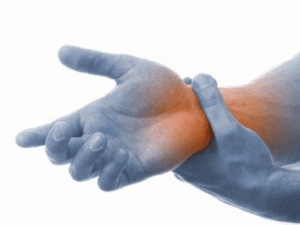Physiotherapy North York – P&C Rehab Services for Rehabilitation
Carpal Tunnel Syndrome
 The carpal tunnel is an anatomical compartment which is formed of ligaments and carpal bones. It is located at the base of the palm at the wrist. Finger flexor tendons and the median nerve pass through the carpal tunnel. Compression of the median nerve within this tunnel produces series of signs and symptoms which is called carpal tunnel syndrome. Carpal tunnel syndrome is the most common and widely known entrapment neuropathies in which the body’s peripheral nerves are compressed or traumatized.
The carpal tunnel is an anatomical compartment which is formed of ligaments and carpal bones. It is located at the base of the palm at the wrist. Finger flexor tendons and the median nerve pass through the carpal tunnel. Compression of the median nerve within this tunnel produces series of signs and symptoms which is called carpal tunnel syndrome. Carpal tunnel syndrome is the most common and widely known entrapment neuropathies in which the body’s peripheral nerves are compressed or traumatized.
Causes
Carpal tunnel syndrome is the result of factors that decrease space in the compartment; eventually compressing the median nerve. Factors contributing are as follows:
- Congenital predisposition – Carpal tunnel is smaller in some subjects since birth.
- Trauma or injury to wrist like fracture, sprain which causes swelling near the wrist.
- Hormonal imbalance – Over activity of pituitary gland; hypothyroidism; diabetes.
- Rheumatoid arthritis.
- Mechanical problems in wrist like work stress; repeated use of vibrating hand tools.
- Fluid retention in pregnancy and menopause.
- Cyst or a tumor in the carpal tunnel.
- Bursitis or tendonitis around the wrist.
- Obesity.
Signs and symptoms
Symptoms appear gradually, without a specific injury. Most common symptoms are:
- Tingling, numbness, pins-needle and burning sensation over thumb, index, middle and half of the ring finger.
- Tingling, numbness and pain may move up to your arm.
- Weakness in hand.
- Dropping objects. i.e. decreased grip strength.
- Difficulty handling fine objects like pin, pen, key, etc.
- In severe carpal tunnel syndrome, there is muscular atrophy (loss of muscle mass) of thumb.
- In severe and long standing cases, there is loss of sensation over palmar aspect of thumb, index, middle and ring finger.
Diagnosis
- History and Physical examination – Carpal tunnel Syndrome is diagnosed mostly from history and symptoms. Examination of neck, shoulder, elbow, pulses and reflexes are performed to rule out other conditions. Tapping near the wrist can sometimes produce tingling and numbness. This is called positive Tinel’s sign. Phalen’s maneuver (bending of wrist) confirm the diagnosis.
- Nerve conduction velocity test- This test measures the rate of speed of electrical impulses as they travel down the nerve. In carpal tunnel syndrome, impulses slow down as it passes through the median nerve at carpal tunnel.
- Electromyography (EMG) – Test of muscles of extremity is sometimes carried out to exclude other muscular conditions that mimic carpal tunnel syndrome.
- Miscellaneous- Blood test including thyroid hormone levels, complete blood counts, blood sugar and protein analysis may be performed to identify medical conditions associated with carpal tunnel syndrome. X-ray tests of the wrist and hand might also be helpful to identify abnormalities of the bones and joints of the wrist.
Treatment
Carpal tunnel Syndrome must be treated as early as possible. It can be treated non-surgically if symptoms are mild to moderate.
- Rest and ice – Symptoms of mild carpal tunnel syndrome can be eased by taking more frequent breaks to rest the hand and avoid activities that stress the wrist. Application of ice packs will alleviate swelling and pain.
- Wrist splint- Stabilizing the wrist in a splint will limit the wrist motion and hence reduce the symptoms. Nocturnal splinting is a good option to limit night time symptoms. This is a good option in pregnancy causing carpal tunnel syndrome.
- Physiotherapy and occupational therapy- Stretching and strengthening exercises of wrist and finger muscles is a key to relieve the symptoms. The use of modalities by the physiotherapist can also relieve symptoms.
- Medications- Non steroidal anti-inflammatory drugs like ibuprofen can relieve pain and swelling. In severe cases, corticosteroid is injected in the carpal tunnel to relieve the symptoms.
- Surgery- If symptoms are not reduced with conservative methods then surgery is a preferred option. The goal of carpal tunnel surgery is to relieve pressure on the median nerve by cutting the ligament pressing on the nerve.
The health professionals at P&C Rehabilitation Services have extesive experience treating carpal tunnel syndrome. The physiotherapist, chiropractor, and massage therapist all provide treatment for this condition. If you are suffering from this condition call today and bok your free consultation.
